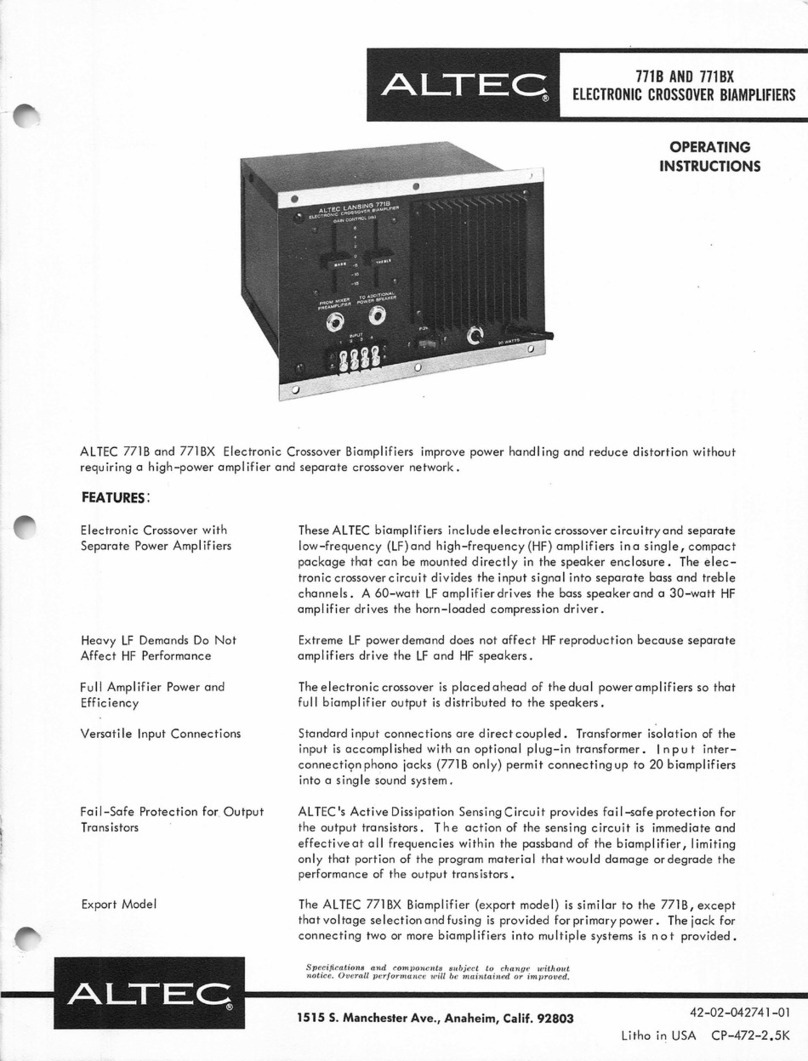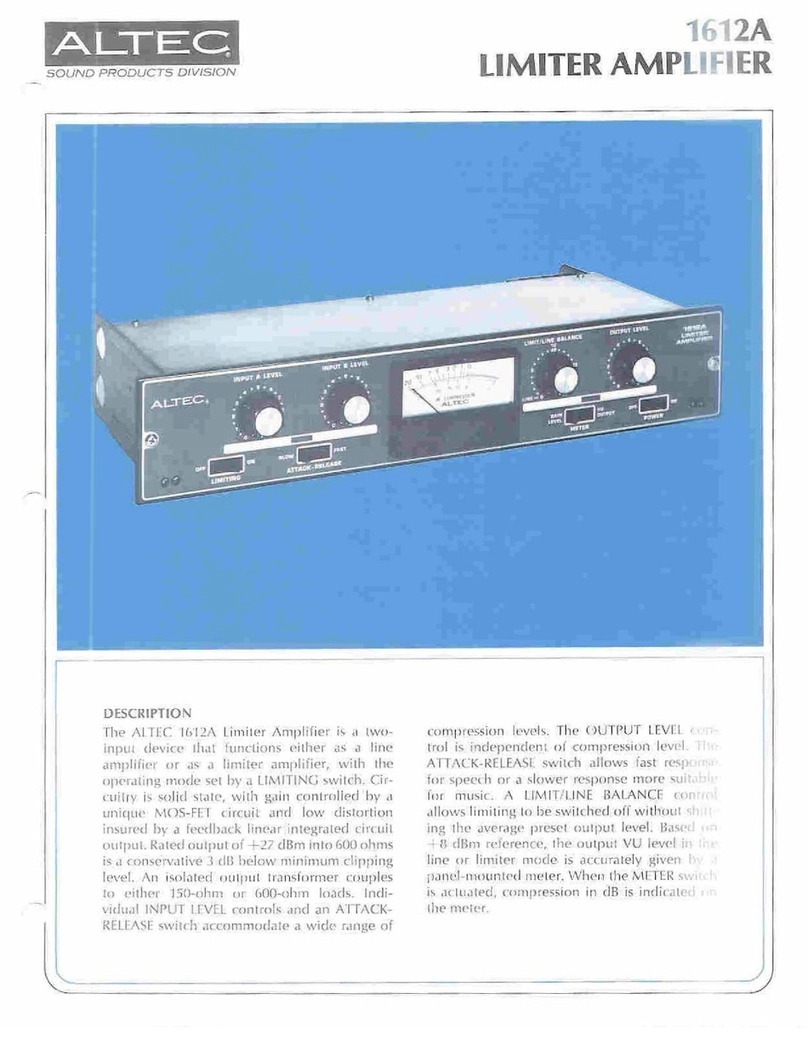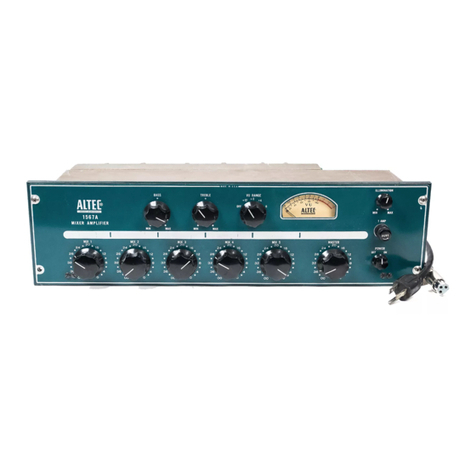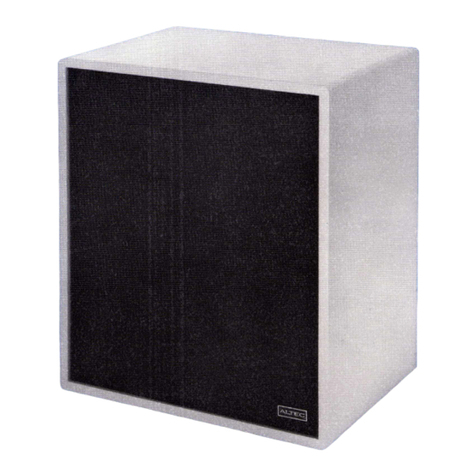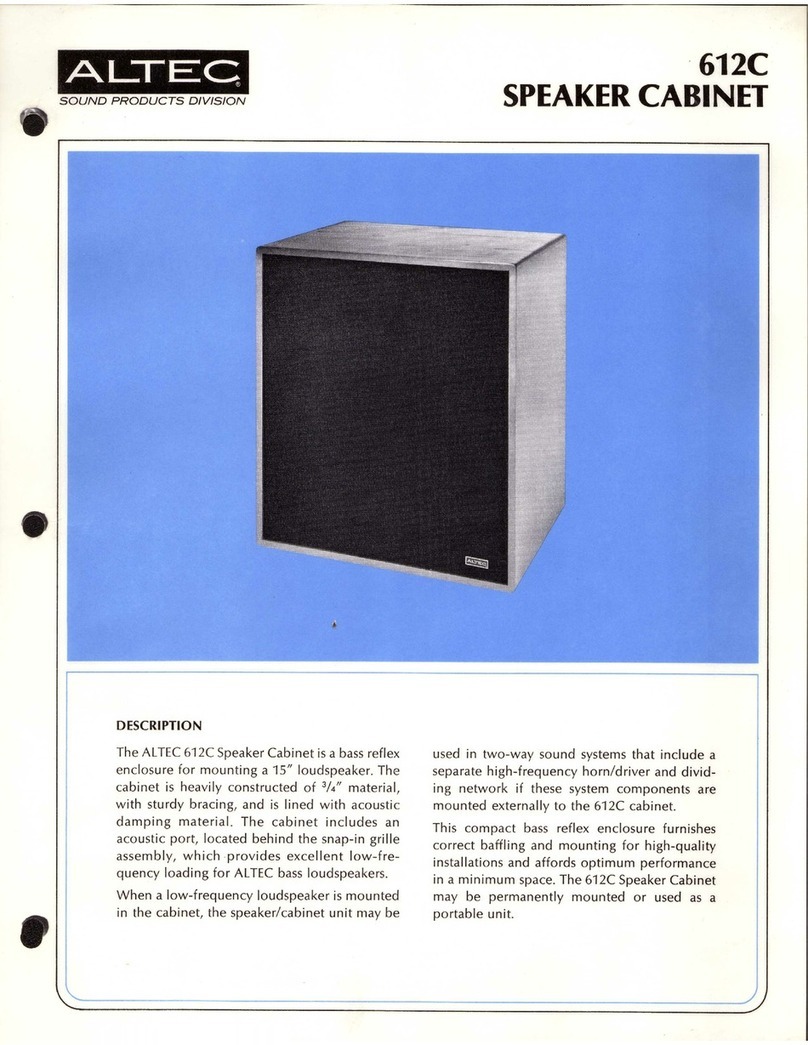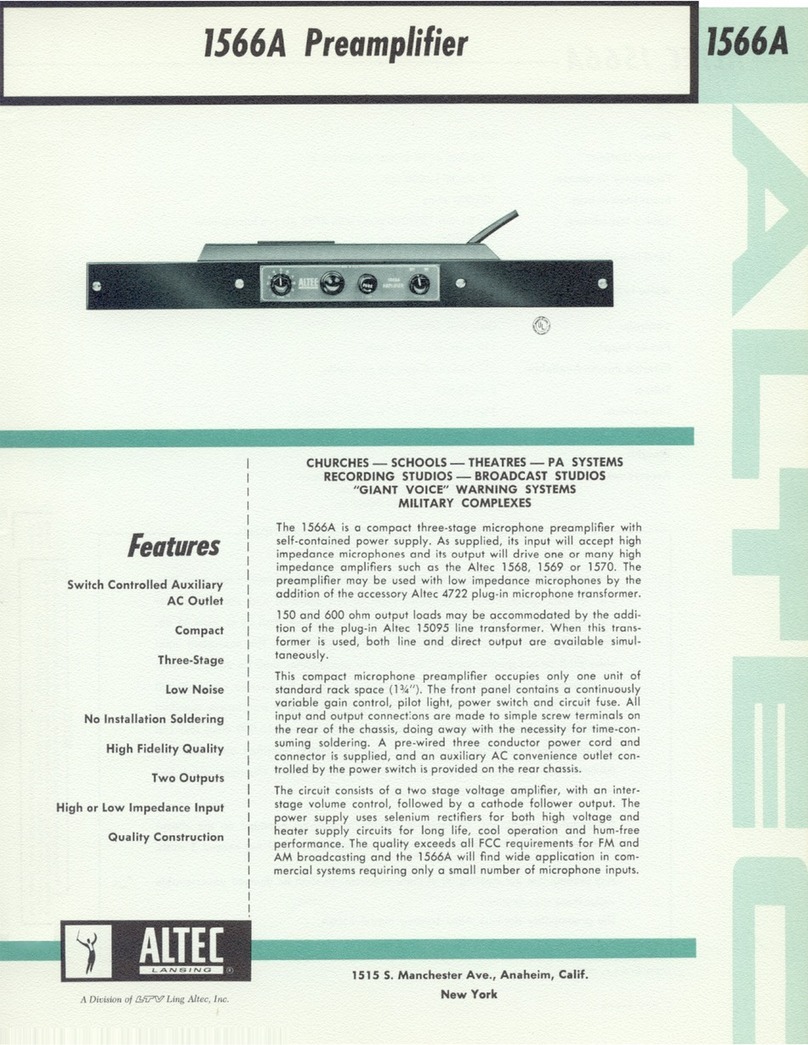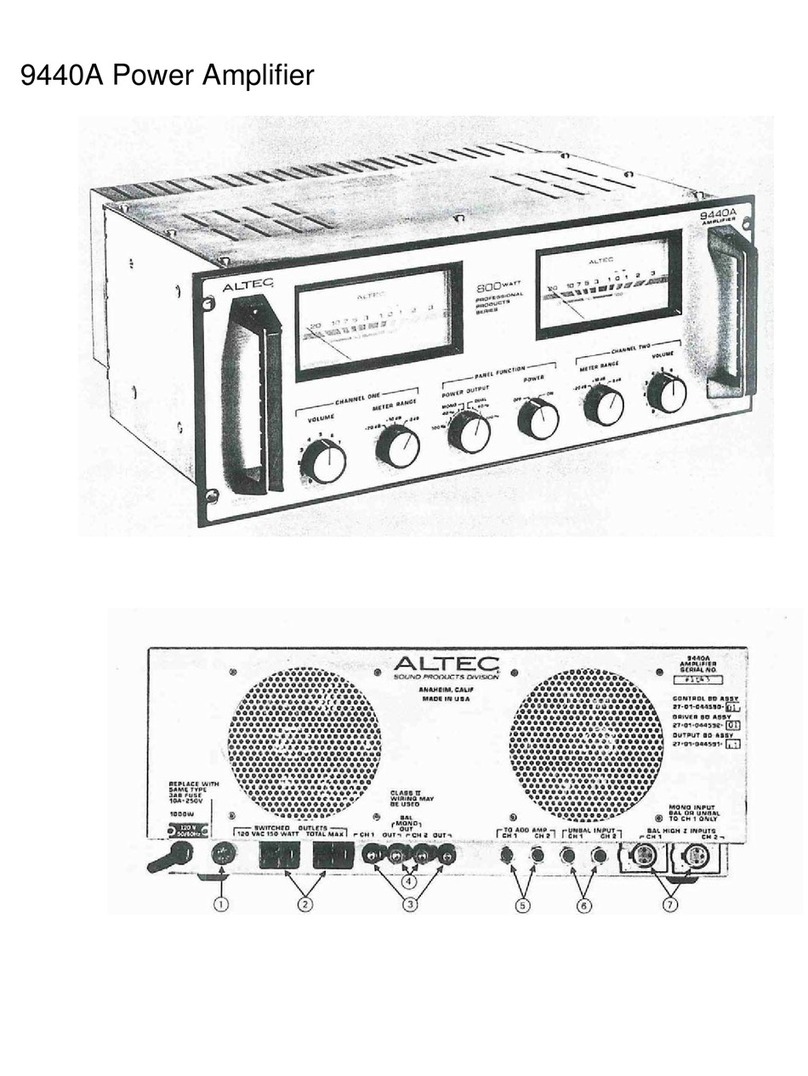
Step
5.
Adjust R136 and R137 by one of the following
methods [method (a)
is
preferred]
:
(a) Locate wire attached to terminal 1 of
output transformer T2. Connect
a
clamp.
on milliammeter to this wire and adjust
R136 counterclockwise for a
"a"
cur
-
rent of 40 mA. Change connection of
milliammeter to wire attached to terminal
3
of output transformer T2 and adjust
R137 for a
"
Q
"
current of 40 mA.
(bl Remove two screws securingPower Driver
PCB to chassis and lower PCB on hinged
connector. Connect a millivoltmeter
across resistor R7 (see Figure
lo),
starling
with highest scale to protect meter. Ad
-
just R136 for meter reading of 13 mV.
Change connection of millivoltmeter to
read across resistor R8 and adjust R137
for meter reading of 13 mV. Remove
millivoltmeter and secure PCB to chassis
with two screws previously removed.
Step 6. Close front panel and secure with four screws
removed in Step 2.
ASSEMBLY REPLACEMENTS
Fuses
Step
4.
Carefully insert new or repaired power driver
PCB into connector. Do not warp, bend or twist
the board or conductor may fracture.
Step
5.
Secure PCB with two screws removed in Step
2.
Step 6. Perform ADJUSTMENT OF POWER DRIVER
BALANCE CONTROL procedure.
RECOMMENDED SERVICE TECHNIQUES
If systematic troubleshooting shows need for parts replace
-
ment, observe the following precautions.
Transistor Orientation
Solid
-
state components are packaged in various case sizes
and types with various lead orientations (see Figure
9).
Be
-
fore removing
a
solid
-
state component from tie points or
from
a
PCB, sketch the lead orientation with respect to the
tie
points or PCB.
Form the leads of the new component to conform with the
leads of the part being replaced to aid in making proper
connections. Before removing small transistors, note posi
-
tion of index tab with respect to the PCB or socket. Cut
the leads of the new transistor to the required length and
insert them, properly indexed, into the PCB or socket.
ReplacingPower Transistors
The ac primary power fuse
is
mounted on the front panel
(see
cover photo). The battery power fuse
is
located on the
rear of the chassis (see Figure 6). Iffuse replacement
is
re
-
quired, determine and correct any cause of failure before
re
-
plac~ngfuse. Install an identical fuse (see PARTS LIST) by
unscrewing fuse holder, replacing fuse and resecuring fuse
holder.
Pilot Lamp
The pilot lamp
is
located on the front panel (see cover
photo). If replacement
is
required, unscrew the red pilot
lamp shield to expose the bulb. Press bulb inward and tLlrn
~~~nter~lo~k~ise
(CCW)
to remove. Install an identical bulb
(see
PARTS LIST), then replace red pilot
-
lamp shield.
Power Driver PCB
If the amplifier fails because of
a
faulty power driver PCB.
operation may be restored by replacing the PCB with
a
new
or repairedPCB. Use the followingprocedure.
Step 1. Remove four screws securing front panel. Open
and lowerpanel for access toPCB
(see
Figure
5).
Step
2.
Remove two screws securing PCB to chassis
brackets.
Step 3. Lower hinged connector of PCB and carefully
remove PCB from connector.
Verify the following conditions exist when replacing
power transistors.
1.
Mica insulator
is
not damaged. If damaged, use new
insulator.
2.
No grit or metal particles are between transistor and
heat sink.
3. Both sides of mica insulator are covered with silicone
grease or fluid.
4. Mounting screws are tight,
TestingTransistors
Transistors should be checked with
a
transistor tester. If a
tester
is
not available, use the following procedure for test
-
ing transistorswith an ohmmeter.
Step 1. Remove suspected transistor from circuit (see
ReplacingPCB Components).
Step
2.
Connect ohmmeter leads to base and emitter.
Read on lowest ohms scale. Reverse leads and
read again. Normal readings should be
at
least
10 times greater in one direction than in the
other.
Step 3. Connect ohmmeter leads to base and collector.
Ohmmeter readings should be similar to those
obtained inStep
2.


